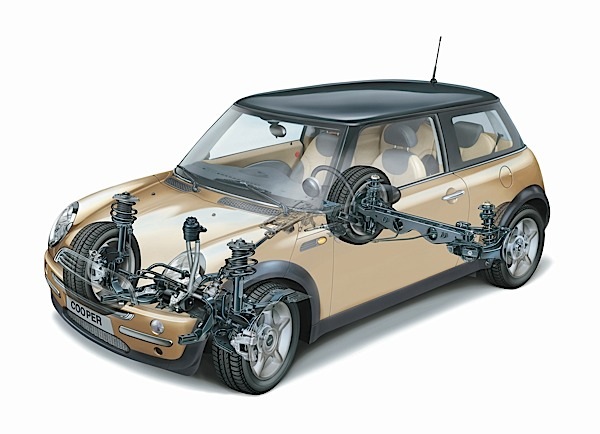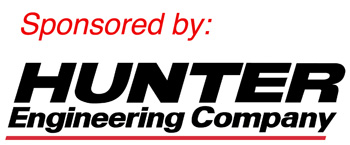Front Camber or Caster: There are no built-in factory adjustments for front camber or caster. The only way to adjust these angles is to purchase adjustable upper strut mounts. These kits can typically adjust camber by ±2.00º and caster by ±0.75º.
Bushings: The Mini uses four hydraulic bushings. In the front, the hydraulic bushing is located at the rear of the control arms. In the rear, the hydraulic bushing mounts the trailing arm to the body. These mounts can leak when they fail. The camber and toe will change when the bushings go soft. BMW recommends replacing the bushings in pairs.
Steering Angle Sensor (SAS): On Minis without Electronic Stability Control (ESC or DSC), SAS is not installed. Reprogramming the sensor on ESC Minis requires an enhanced scan tool that can communicate with the ABS and BCM modules.
Rear Toe: Rear toe is adjusted by an eccentric bolt and plate that secures the lower transverse link to the trailing arm. The rear toe and camber angles on the Mini have a considerable amount of cross-talk. If the rear camber is in spec but at the fringes, a toe adjustment could push it over the edge. Also, check ride height before doing a drastic adjustment.
Rear Camber: The rear camber is not adjustable. If the rear camber needs to be adjusted, it requires replacement of the lower control link with an adjustable part.
TPMS: The first-generation Mini has two TPMS systems and one reset procedure. The base system is an indirect system that works off the wheel speed sensors. The optional system is a direct system that was an option and often standard on cars with run-flat tires. To reset these systems, switch the engine off and the ignition on, press the “Set” button and hold (approx. 6 seconds) until the words “Set tire pressure” appear in the instrument cluster (instrument cluster high) or the yellow LED lights up (basic instrument cluster).











